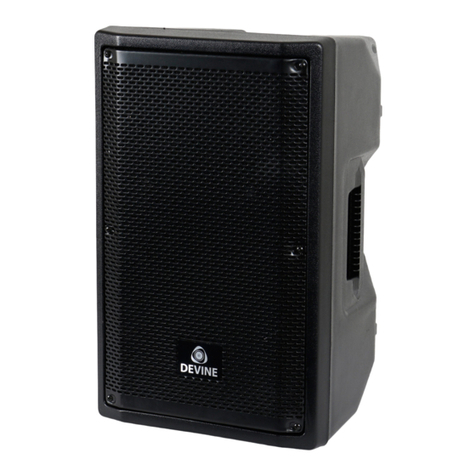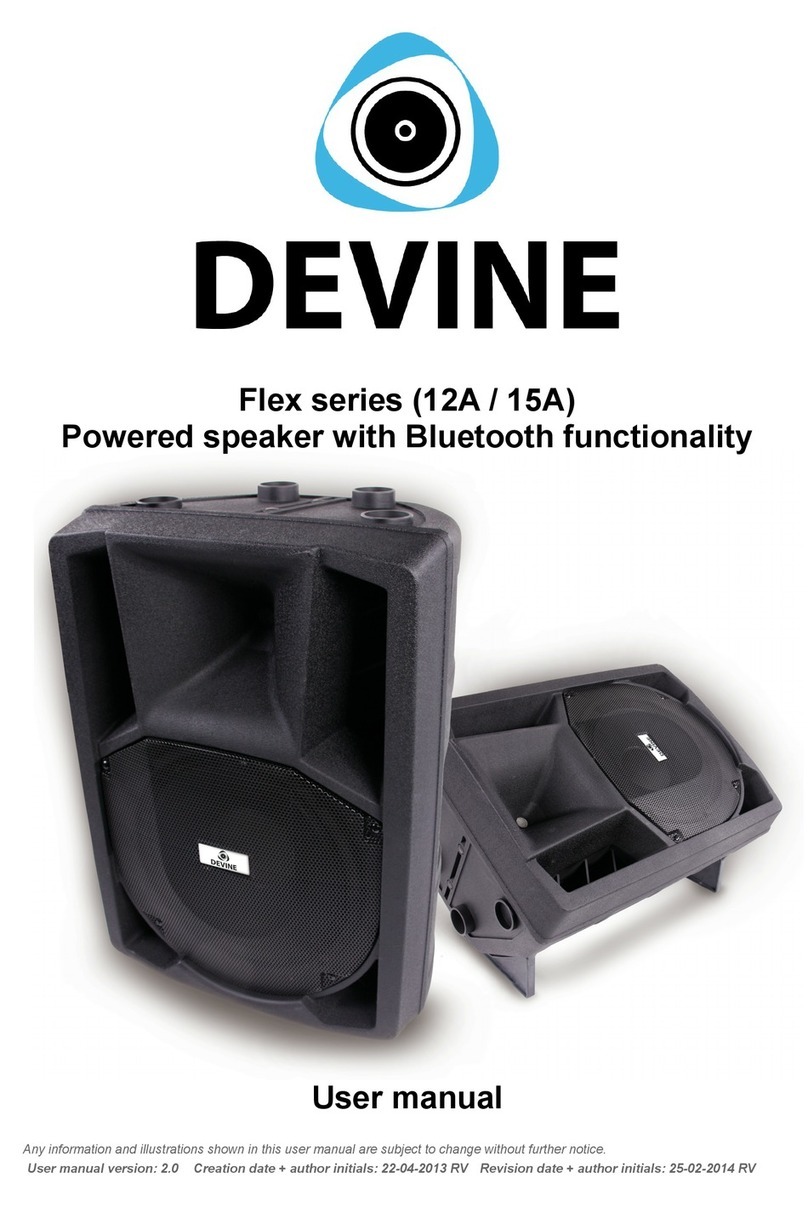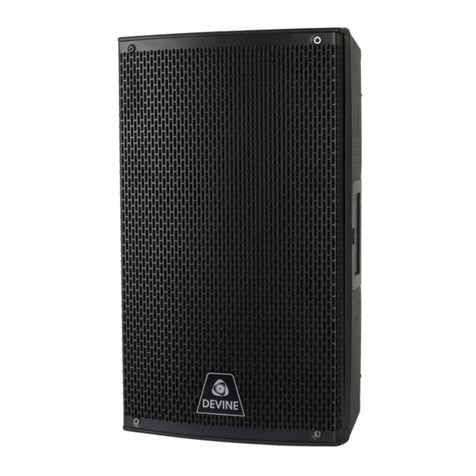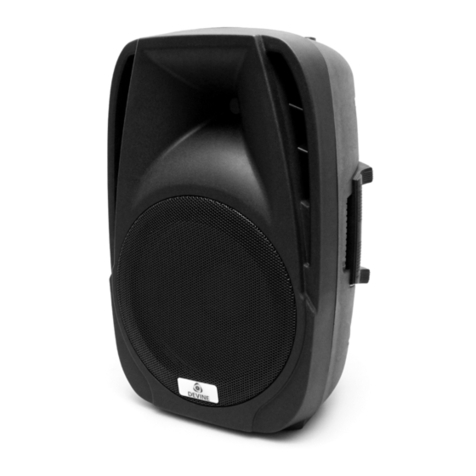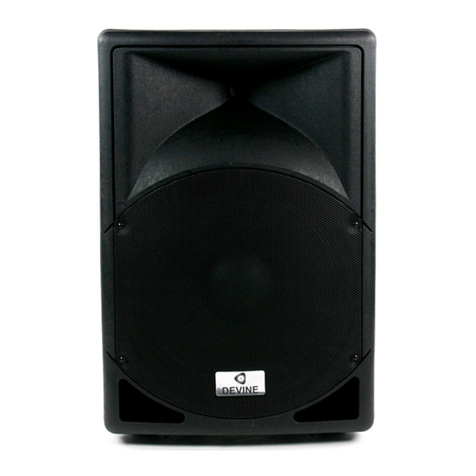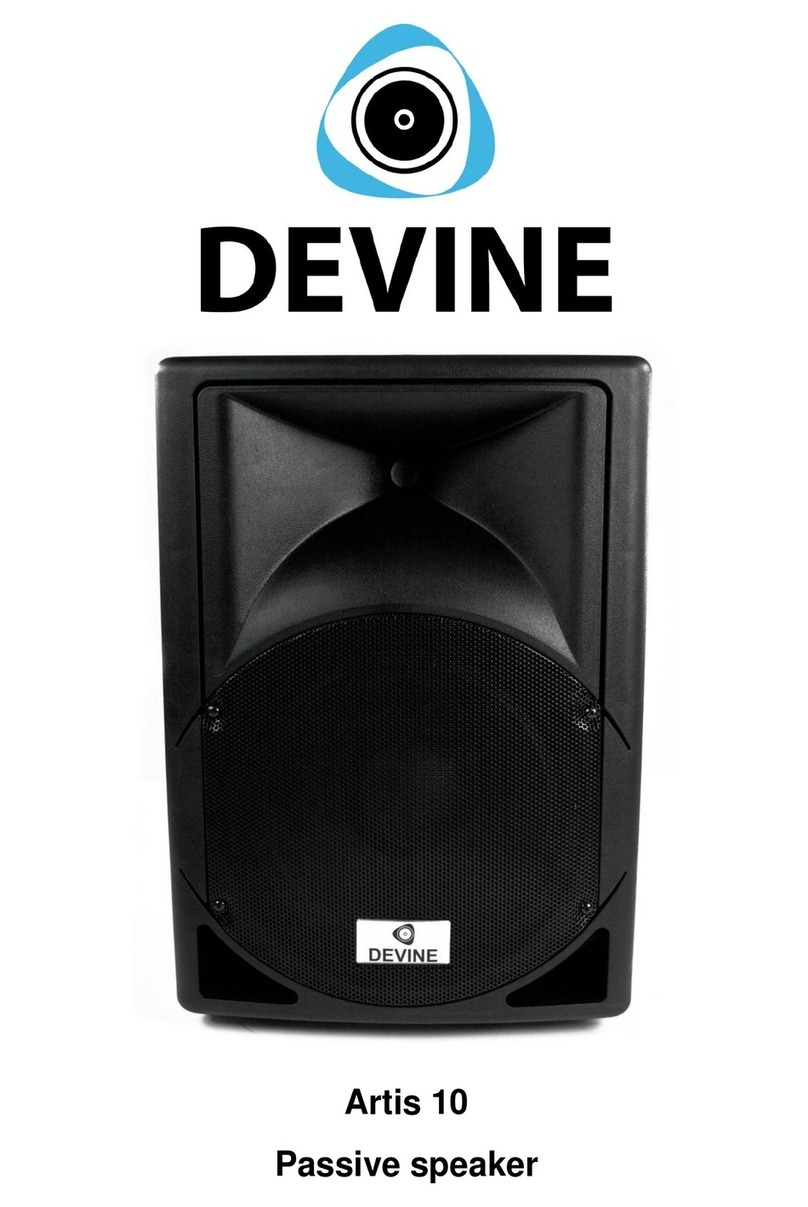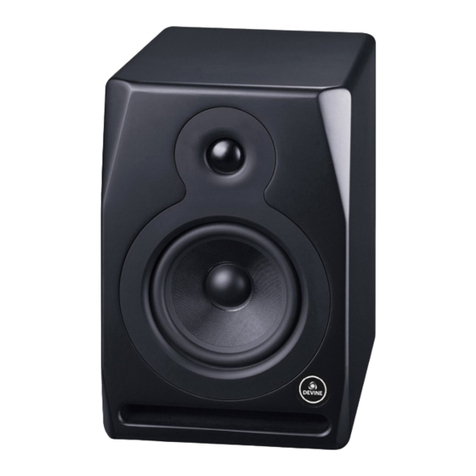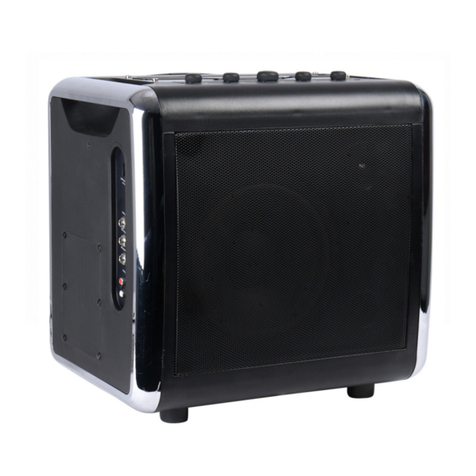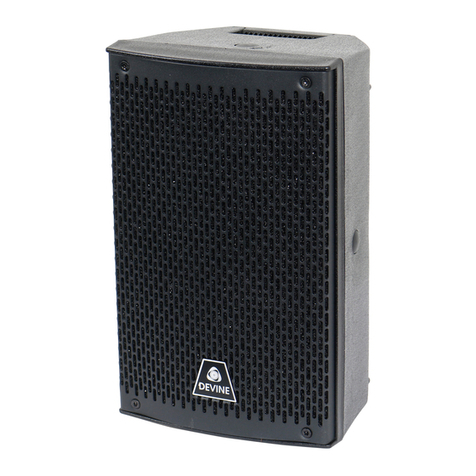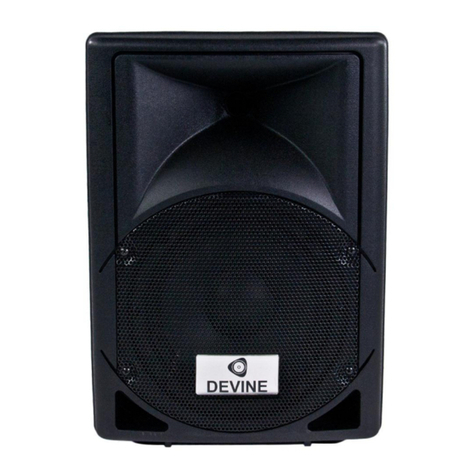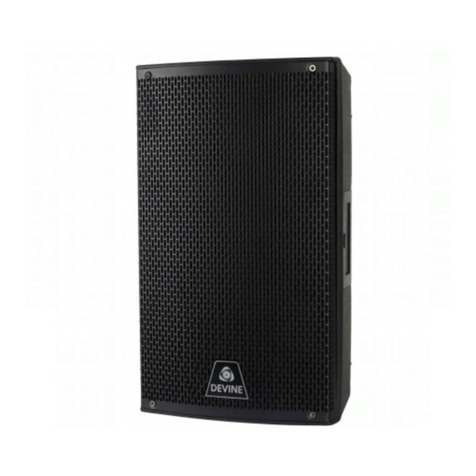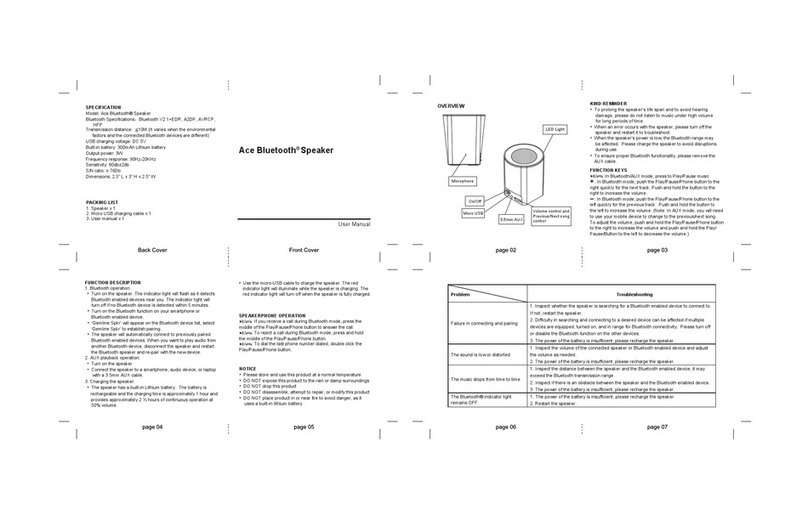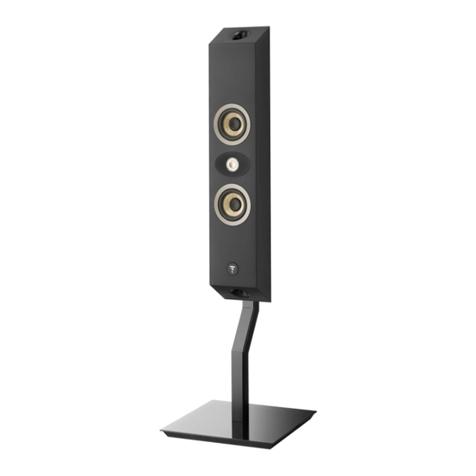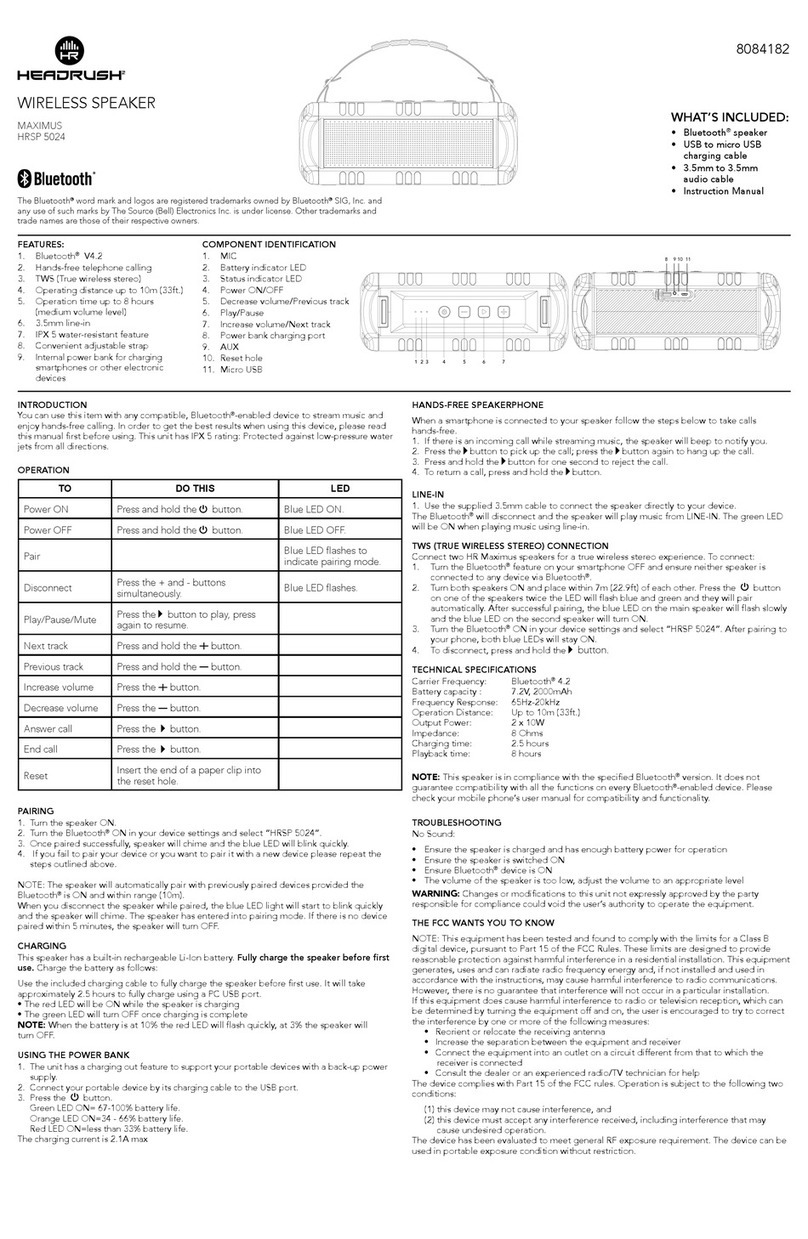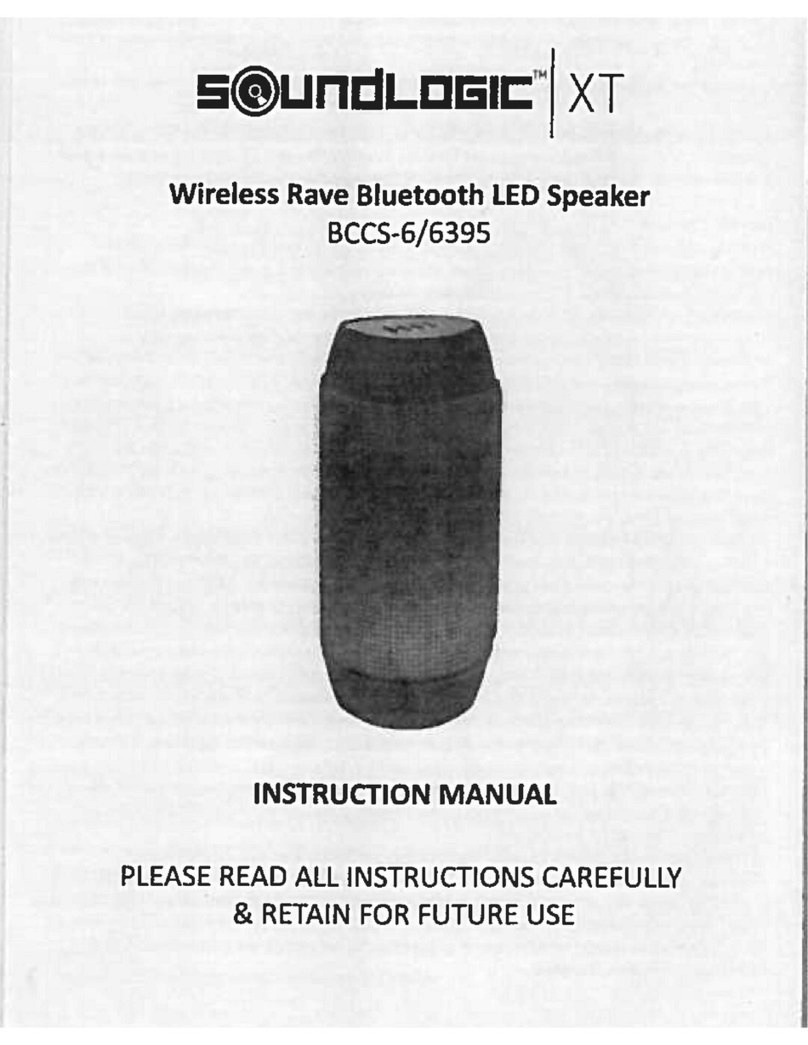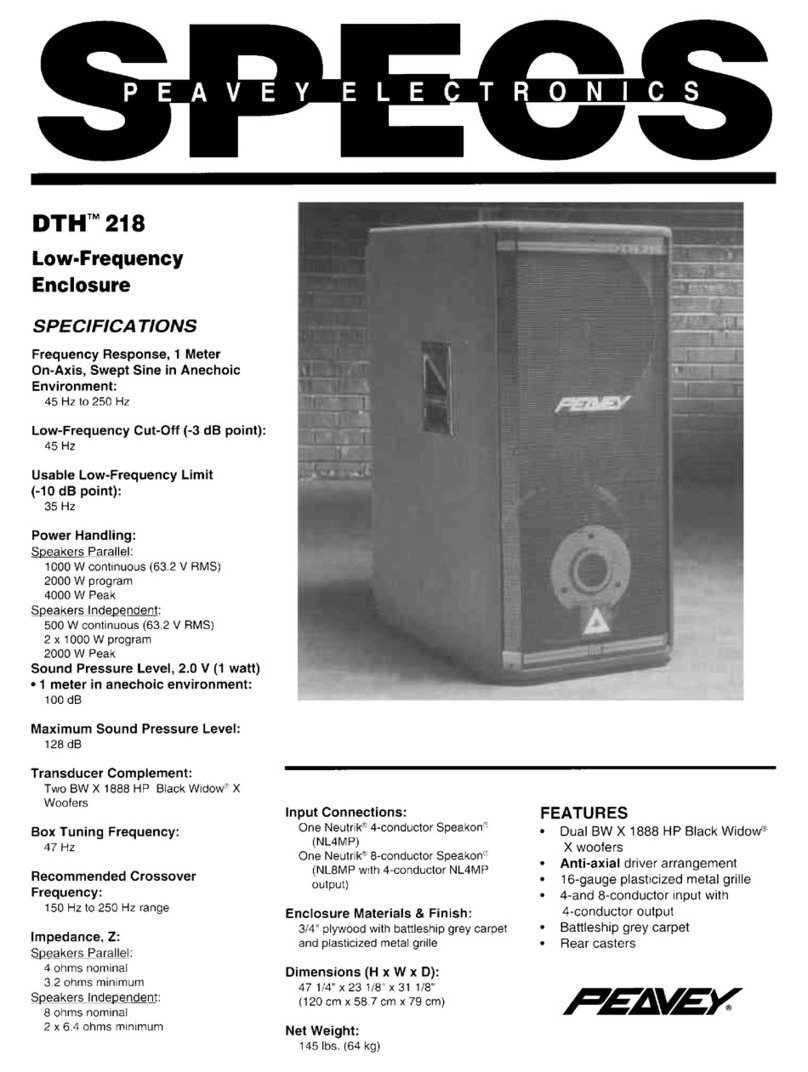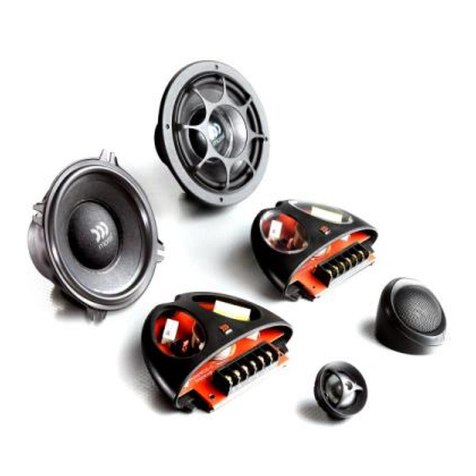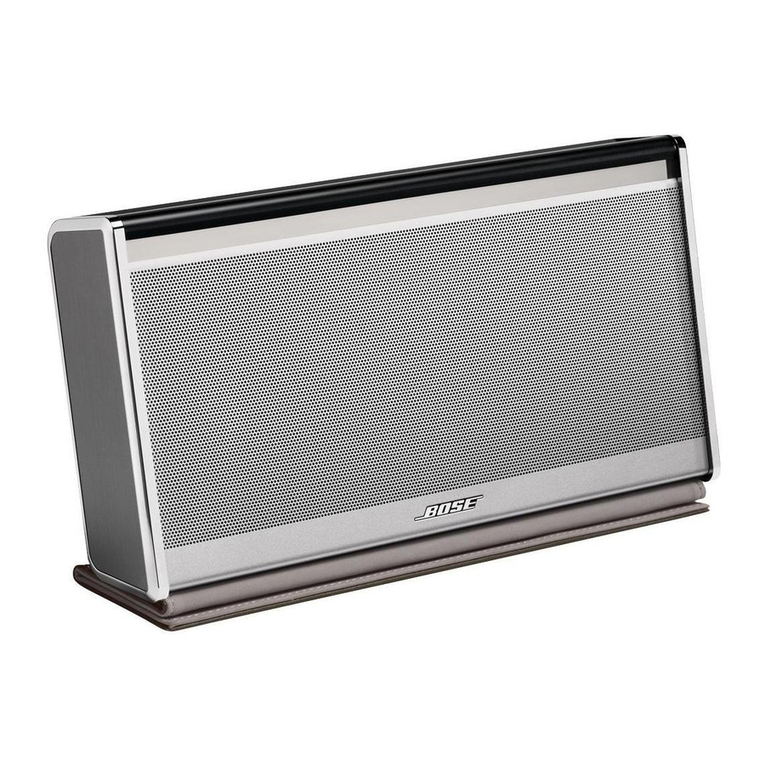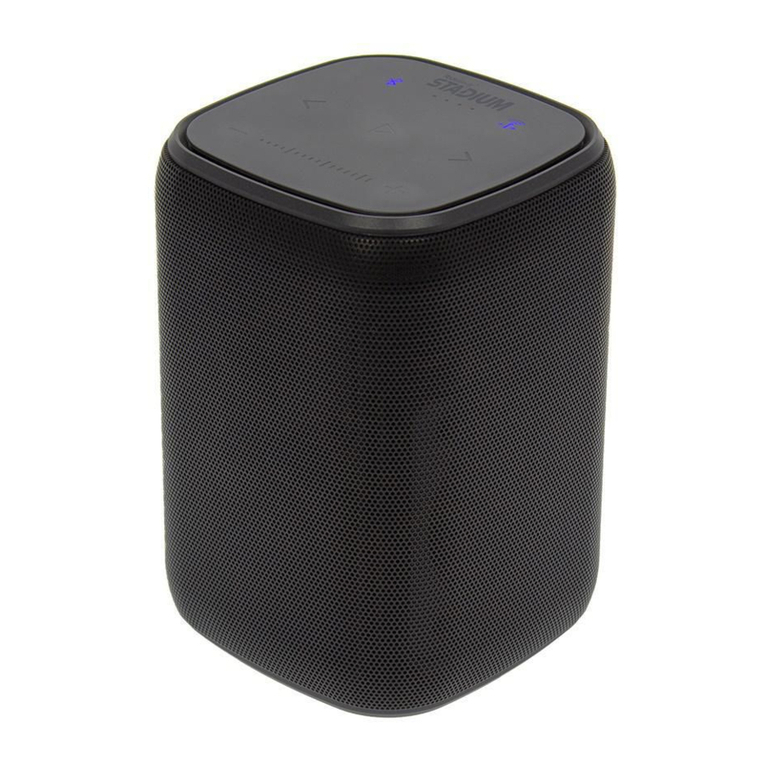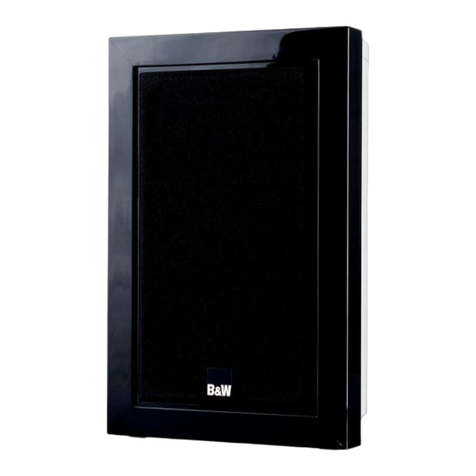experimenting to find the optimal distance for the best-sounding results in your studio.
t is not recommended to place one of the speakers in the corner of a room against the wall as this may lead
to an unbalanced sound. f this is the only option, however, try and keep the setup as symmetrical as
possible and try to ensure that the bass ports on the studio monitors are also positioned as symmetrically as
possible towards the wall.
Long or short side of the wall in a room
n a rectangular room, it's recommended to place the monitors next to one of the shortest walls.
This gives the sound more room to spread as well as giving reflections more of a chance to break up and
fade away. The result of this is that you will hear more of the direct sound that you want to hear and less of
the reflected sound that you don't.
f your room is small with the opposite wall just 1 to 2 metres away from your listening position and you're
experiencing problems with the acoustics, then this can usually be solved with absorbers that dampen and
soak up the reflections behind you. t's best to consult an expert when using products that change the
acoustics of a room for optimal results. Different types of products can have different results depending on
their application and the initial problem.
General tips for monitor placement
Take the time to find the most optimal position for your monitors in a room. Even moving them by a few
centimetres can make a world of difference to the sound quality because reflections can enhance or dampen
certain frequencies.
Audio technology and adjustments
Sound sources, interface, DA
Once your studio monitors are in the right position, it's important to use a good-quality sound source for the
best possible results. This includes audio files that, ideally, should be the best-quality original material and
not converted files.
The hardware used to play audio should also be the best quality possible. When playing files via a computer
(PC or laptop) or a mobile device (smartphone, recorder or tablet), it's a good idea to use an audio interface
or DAC (Digital to Analogue Converter) that will convert digital files into an analogue signal while retaining as
much of the original quality as possible. Built-in sound cards, especially cheaper models and those found in
mobile devices tend to have a negative influence on the sound.
The audio interface or DAC you use should preferably have a relatively high output with plenty of headroom
to prevent problems with distortion and ensure the audio signal reaches your monitors at a sufficient volume
without the need for much extra amplification. Any extra amplification that's required can have a negative
influence on the audio signal.
ables
The type of cables used can also influence the quality of the sound. For best results, use good-quality
balanced signal cables with TRS jack plugs or XLR connectors. The MR-5A and MR-6A are equipped with
both types of inputs. Using unbalanced cables is also possible but this can have a negative influence on the
volume of the incoming signal and makes it more sensitive to interference.
n general, studio and recording equipment are always equipped with balanced outputs. Consumer products
like smartphones and laptops tend to have unbalanced outputs, however.
Volume adjustments
The Devine studio monitors are equipped with a volume control that can regulate the incoming signal if
necessary. t is designed to be used to adjust the monitors, not to correct issues with the incoming signal.
When using devices like a smartphone or laptop, the incoming signal may be relatively weak. n this case, a
DAC or a device that is capable of boosting the signal like an audio interface, a mixer or a D box should be
used.
The information in this user manual is subject to change at any time without notice.
Version: 1.0 Date of creation and author's initials:14-07-2017 RV Revision date and author's initials: -
